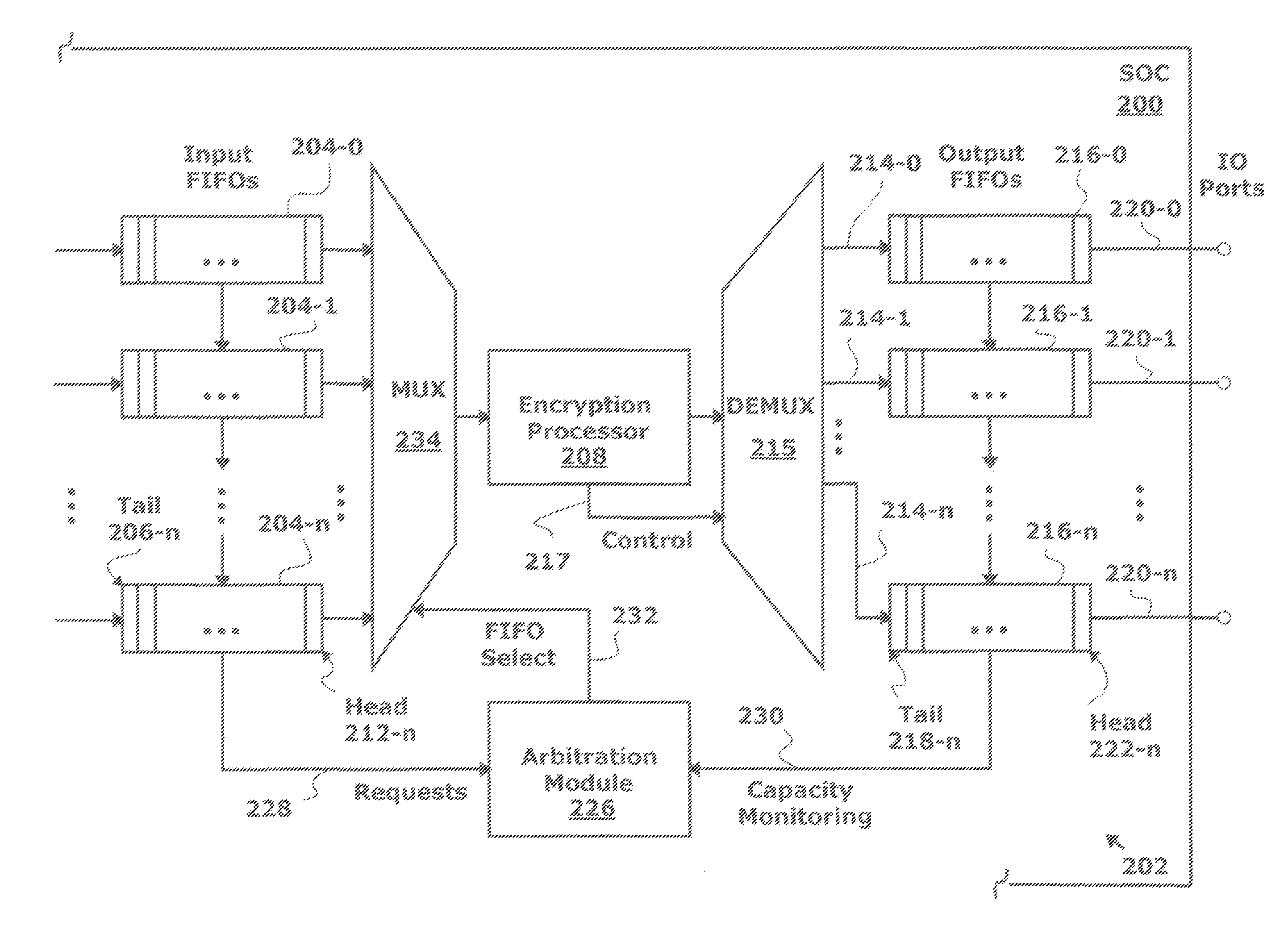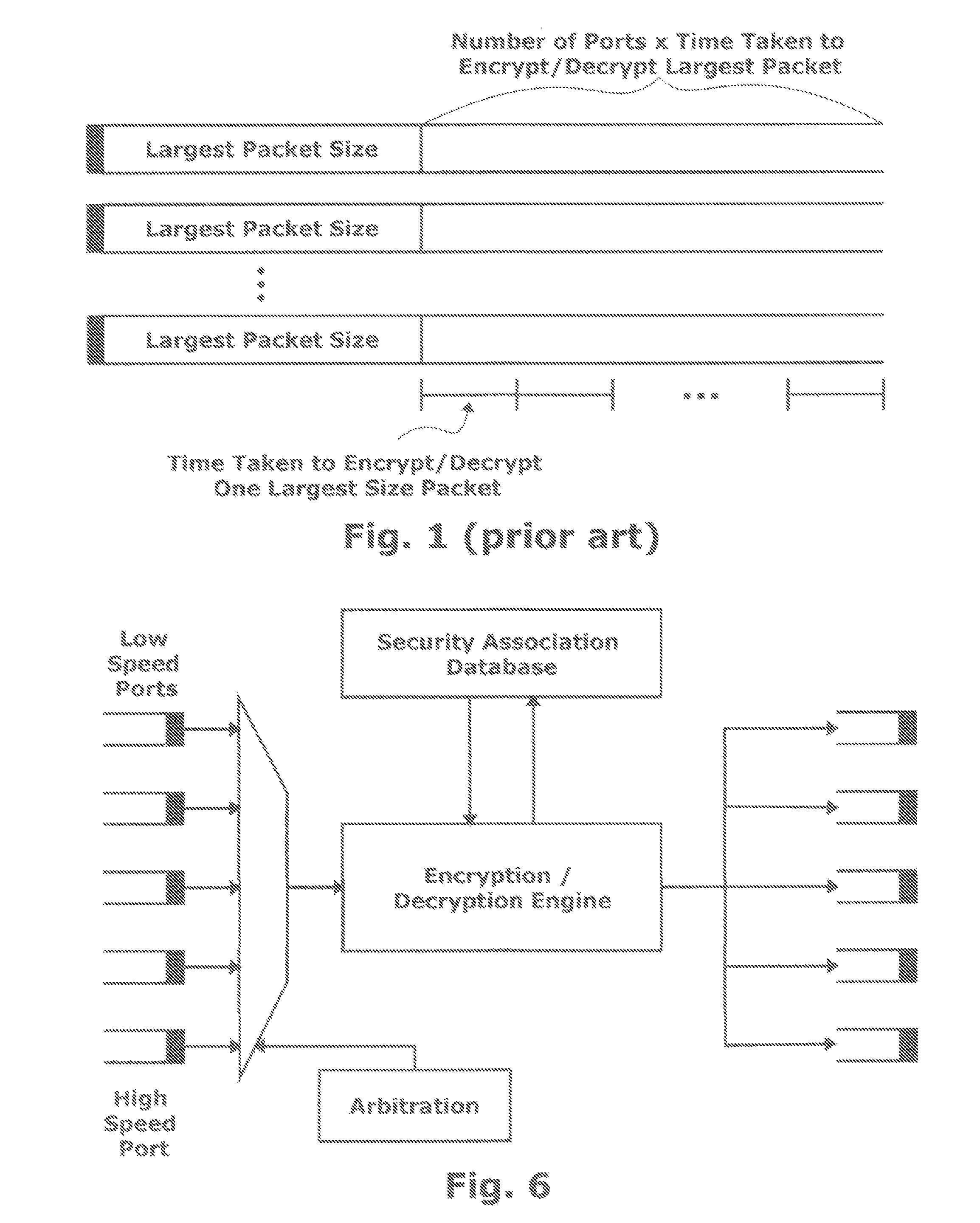Cut-through packet stream encryption/decryption
a packet stream and encryption technology, applied in the field of digital communications, can solve the problems of increasing die size, poor overall resource utilization, and inability to use both interfaces simultaneously, and achieve the effect of reducing the buffering requirements of input and output packets
- Summary
- Abstract
- Description
- Claims
- Application Information
AI Technical Summary
Benefits of technology
Problems solved by technology
Method used
Image
Examples
Embodiment Construction
[0026]FIG. 2 is a schematic block diagram of a system-on-chip (SoC) 200 with a system for the cut-through encryption of packets transmitted via a plurality of input / output (IO) ports. The system 202 comprises a first plurality of input first-in first out (FIFO) memories 204-0 through 204-n, where n is an integer variable not limited to any particular value. Each input FIFO 204 has a tail 206 to accept packets from the SoC 200 at a corresponding input data rate. Note: the input data rates in the input FIFOs 204 are not necessarily all the same rate. Generally, a packet block is a segment of data that is less than, or equal in size to a packet. In one aspect, the packet block is defined as a segment of m bytes, where m is fixed integer variable, or as a partial block including an end of a packet. In another aspect, the input FIFOs 204 accept Internet Protocol Security (IPsec) Encapsulating Security Protocol (ESP) packets in a transport or tunnel mode.
[0027]An encryption processor 208 ...
PUM
 Login to View More
Login to View More Abstract
Description
Claims
Application Information
 Login to View More
Login to View More - R&D
- Intellectual Property
- Life Sciences
- Materials
- Tech Scout
- Unparalleled Data Quality
- Higher Quality Content
- 60% Fewer Hallucinations
Browse by: Latest US Patents, China's latest patents, Technical Efficacy Thesaurus, Application Domain, Technology Topic, Popular Technical Reports.
© 2025 PatSnap. All rights reserved.Legal|Privacy policy|Modern Slavery Act Transparency Statement|Sitemap|About US| Contact US: help@patsnap.com



